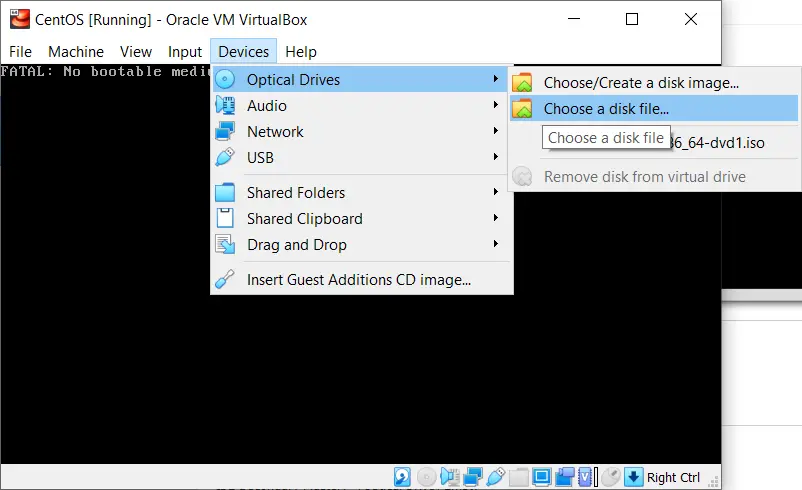

- #Virtualbox no virtual optical disk file created how to
- #Virtualbox no virtual optical disk file created install
- #Virtualbox no virtual optical disk file created software
- #Virtualbox no virtual optical disk file created iso
So here we will have the opportunity to choose the medium from which we are going to install the virtualized system on the created VirtualBox machine. In the window that appears, we are located in the Storage section of those located in the left panel. To do this, we select it and click on the Configuration button located at the top.
#Virtualbox no virtual optical disk file created iso
Of course, first of all we have to load the operating system as an ISO image on the machine as such. This will give way to the initial interface with the created machine, this is located on the left side of it. Prepare and configure the virtual machine However, the dynamic is assigned faster, but once that space is taken, it no longer frees it. To avoid confusion, saying that the fixed disk takes longer to create at this time, hours in some cases, but when it comes to using it in the future, it is faster. In this case, for example, we are going to leave it as dynamic, so we mark the corresponding option and click Next. On the other hand we can leave it as fixed, with which we specify the gigabytes of the disk drive that we give to this machine. On the one hand, we have the possibility of leaving a dynamic reserve, so the virtual machine will take up disk space as it needs it. We have two possibilities here and the choice will depend on each case.

The next step is very important, since it refers to the physical disk space that we are going to let the virtual use on this machine that we are creating. Therefore, among the three that we see on the screen, we leave VDI or VirtualBox Disk Image marked.

#Virtualbox no virtual optical disk file created software
In the event that this is not going to be used with other virtualization software alternative to VirtualBox, as is the case, we leave the default selection. Then we move on to the next virtual disk configuration window itself, where we can specify the type of file we want to use for the mentioned virtual disk. Thus, depending on the total RAM available on the PC, we have to calculate how much we will allow this machine to use when it is running. This is very important to indicate to the program the amount of local RAM we want to allocate to that virtual machine that we are going to create. Well, once the name, type and location of the new machine have been specified, we move on to the next step, which is none other than memory allocation. Here we can select any of the internal drives of the PC, or an external one, of our choice. In order to make things easier for us, the program offers us a drop-down list where to mark our choice.Īnother aspect to keep in mind here is that we can specify the disk path where we want to store the virtual machine. At the same time, here we will also have the opportunity to choose the type of system that we are going to virtualize in this case. We recommend using a name that is representative enough so that we do not get confused in the future. Then a window will appear where we only have to specify the personal name that we want to assign to it. That is why the first thing we need is to download VirtualBox, something we achieved from this link. On the other hand we find that we will also need the program as such. The first of these is the ISO with the image of the operating system that we want to virtualize. It is evident that for all this we need two key elements. That is why in these same lines we are going to show you the easiest way to create a virtual machine through VirtualBox in a few steps.

More and more users are opting for this type of practice, more if we take into account the equipment that we have today.
#Virtualbox no virtual optical disk file created how to


 0 kommentar(er)
0 kommentar(er)
